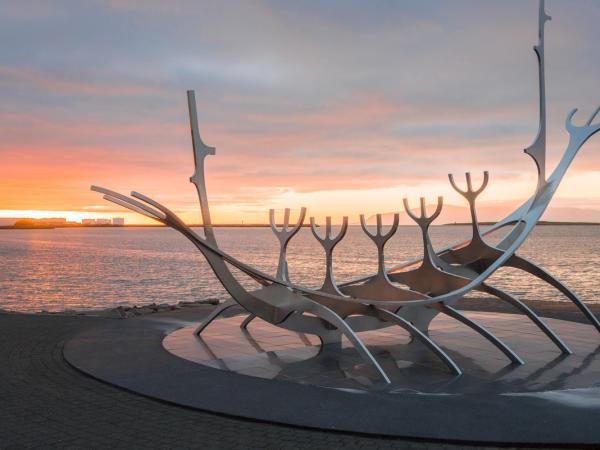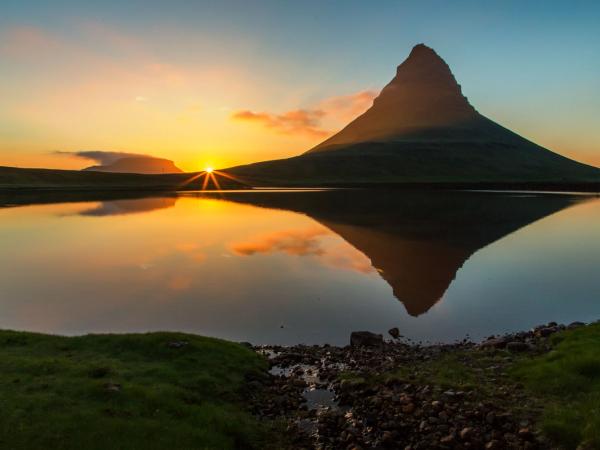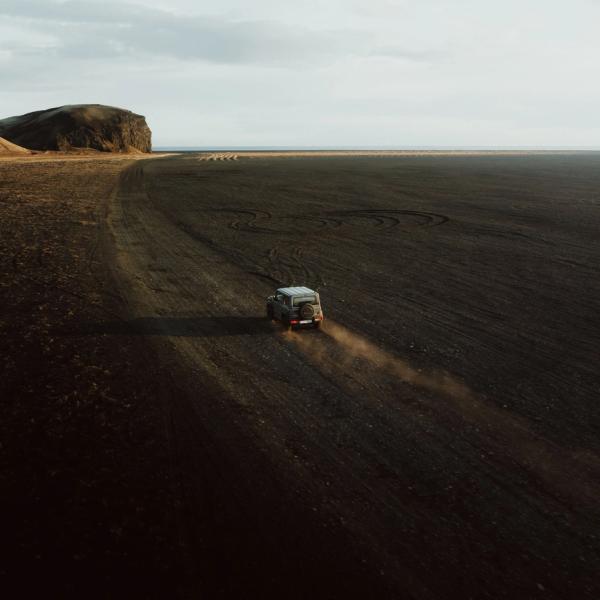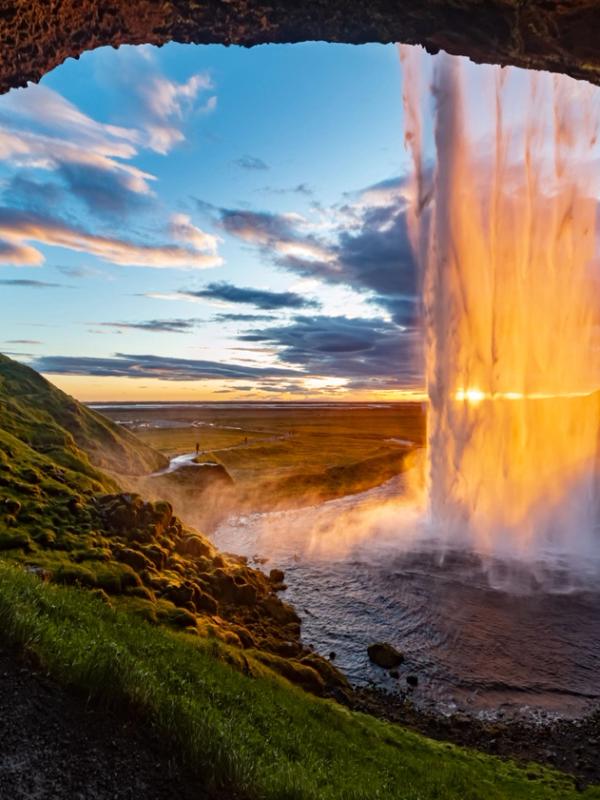
Endless Daylight: Exploring Iceland's Midnight Sun
Imagine standing on a black-sand beach in Iceland at midnight, with golden sunlight still glowing on the horizon. Or soaking in a natural hot spring as the sky turns soft shades of pink and orange during what should be nighttime. This is the Midnight Sun—a time of endless daylight during Iceland’s summer months. It’s a one-of-a-kind experience that feels almost unreal. Here’s what the Midnight Sun is, why it happens, and how you can make the most of it.
What Is the Midnight Sun?
The Midnight Sun is a natural event that happens in places near the Arctic Circle, where the sun stays visible around midnight during the summer solstice. In Iceland, this occurs from mid-May to mid-August. Instead of getting dark, the nights are filled with twilight. Around June 21, at the peak of this phenomenon, the sun barely dips below the horizon or stays up all night, especially in northern Iceland. This means you can enjoy a soft, golden light all evening, turning nighttime activities into daylight adventures.
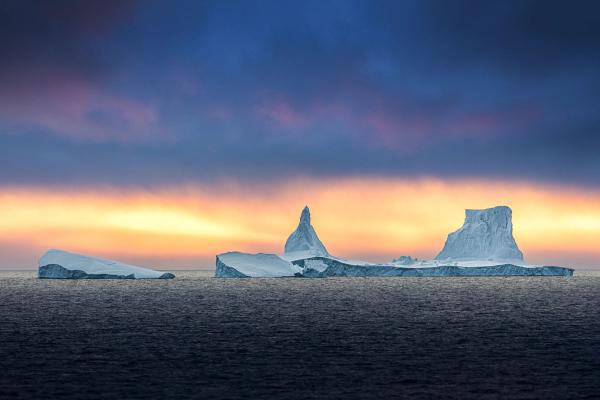
Why Does It Happen?
The Earth is tilted at an angle of 23.5 degrees. During summer, places near the Arctic Circle—like Iceland—tilt toward the sun. Because of this, the sun never fully sets in these areas. Instead of getting dark, you get long hours of soft, golden light that fade into twilight and then roll right into sunrise, with no true night in between.
When Does the Midnight Sun Happen in Iceland?
The Midnight Sun in Iceland happens from mid-May to mid-August, with the brightest days around the summer solstice (June 20 or 21). During this time, the sun hardly dips below the horizon, and in northern places like Grímsey Island on the Arctic Circle, it might not set at all.
May: The Days Get Longer
- May 1: Sunrise at 4:58 AM, Sunset at 9:53 PM (~17 hours of daylight)
- May 10: Sunrise at 4:28 AM, Sunset at 10:22 PM
- May 20: Sunrise at 3:55 AM, Sunset at 10:55 PM
- May 30: Sunrise at 3:26 AM, Sunset at 11:26 PM
In May, the days get longer quickly. By the end of the month, the sun sets after 11 PM and rises just a few hours later, leaving only a short twilight. It’s a great way to get a taste of Iceland’s long summer nights.
June: The Peak of the Midnight Sun
- June 10: Sunrise at 3:03 AM, Sunset at 11:53 PM
- June 20 (Summer Solstice): Sunrise at 2:55 AM, Sunset at 12:03 AM (just after midnight!)
- June 30: Sunrise at 3:04 AM, Sunset at 11:56 PM
June is when the Midnight Sun is at its strongest. Around the solstice, Reykjavík has almost 24 hours of daylight, and in places like Grímsey, the sun doesn’t set at all. Even at night, there’s enough light to keep exploring.
July: Long Days Start to Shrink
- July 10: Sunrise at 3:28 AM, Sunset at 11:36 PM
- July 20: Sunrise at 3:57 AM, Sunset at 11:08 PM
- July 30: Sunrise at 4:29 AM, Sunset at 10:36 PM
July still has long days, but the daylight starts to shrink a little. Sunsets are still close to midnight early in the month, so there’s plenty of time for evening hikes or other outdoor activities.
August: Nights Slowly Return
- August 10: Sunrise at 5:04 AM, Sunset at 9:59 PM
- August 20: Sunrise at 5:35 AM, Sunset at 9:24 PM
- August 30: Sunrise at 6:05 AM, Sunset at 8:48 PM
By August, the Midnight Sun is fading, and nights are returning. Early in the month, you’ll still have long, bright days with about 16 hours of daylight. Evenings stay light until mid-August, giving you ample time to enjoy Iceland’s late summer glow.
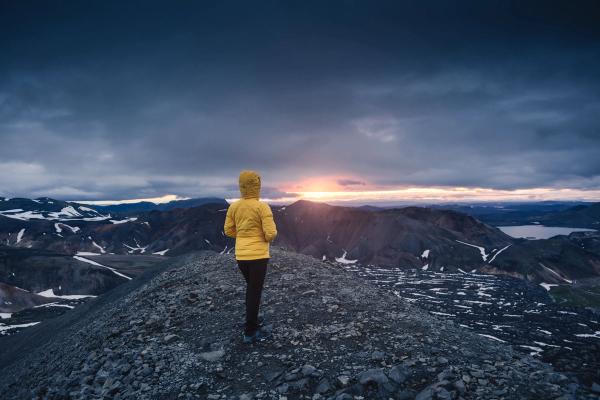
Geographic Variations in Iceland
Iceland’s position near the Arctic Circle means the Midnight Sun differs based on location, even within Iceland. Everyone gets those long summer days, but the farther north you go, the more intense the effect becomes.
Northern Iceland (Akureyri, Ísafjörður, Grímsey Island)
In the north, the Midnight Sun is at its most dramatic. On Grímsey Island, right on the Arctic Circle, the sun might not set at all around the solstice, staying above the horizon even past midnight. In places like Akureyri and Ísafjörður, the sun dips just slightly below the horizon before rising again. From late May to early August, there’s plenty of light for nighttime adventures, so you can keep exploring without worrying about the dark.
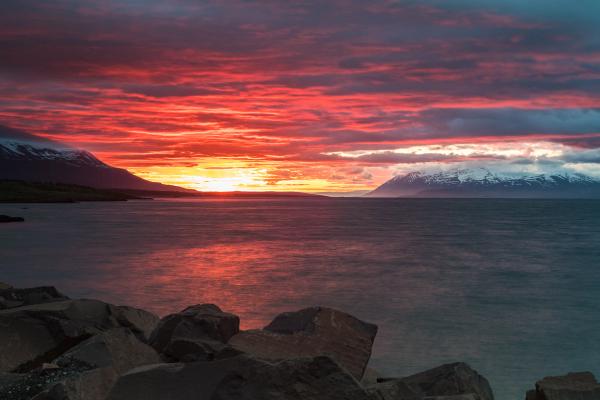
Southern Iceland (Reykjavík and the South Coast)
In Reykjavík and along the South Coast, the sun does set for a few hours, usually around or after midnight, and comes back up by 3 AM. Even when it’s technically “night,” the sky doesn’t go completely dark. On the longest day of the year (around June 21), Reykjavík enjoys about 21 hours of daylight, with sunrise at 2:55 AM and sunset at 12:03 AM. It’s the perfect time to walk around the city or take photos under the soft glow of the evening sky.
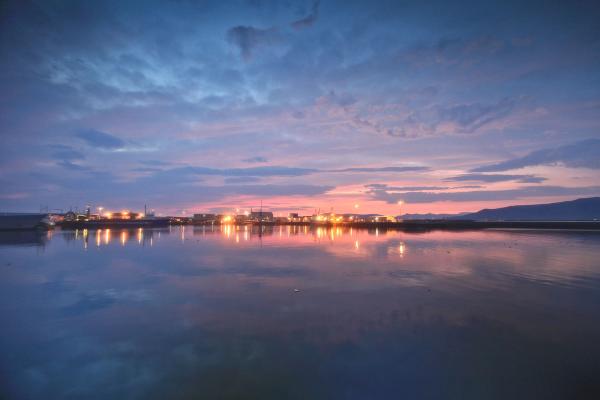
Is Iceland the Only Place That Experiences the Midnight Sun?
Not really, but Iceland’s Midnight Sun is pretty special. Other places like Greenland, Alaska, Canada, Norway, Sweden, Finland, northern Russia, and even the North and South Poles also get it. For example, in Svalbard, Norway, the sun doesn’t set from April 20 to August 22, which is even longer than Iceland. Still, only a small number of countries out of 195 experience this, so it’s no surprise that Icelanders celebrate it with festivals and fun events.
Experiencing the Midnight Sun
The Midnight Sun isn’t just about having extra daylight—it’s a chance to see Iceland in a totally new way. These long, sunny days make it easy to visit famous spots, try new activities, and enjoy the special feeling of a day that never really ends.
Best Locations
You can experience the Midnight Sun all over Iceland, but some places make it even more memorable with amazing views and endless light.
Reykjavík
Reykjavík doesn’t get a full 24-hour sun, but it still has some great spots to enjoy the Midnight Sun. Perlan (The Pearl) gives you a full 360° view of the city, and the Sun Voyager sculpture by the waterfront is a perfect place to watch the sun reflecting on the ocean late at night.
Grímsey Island
Grímsey, right on the Arctic Circle, is the best place to see the Midnight Sun in all its glory. Around the summer solstice, the sun never sets. It just stays above the horizon all night. It’s a bucket-list destination for anyone looking for that true “midnight” sunlight.
Snæfellsnes Peninsula
Sometimes called “Iceland in Miniature,” Snæfellsnes has it all: glaciers, lava fields, black-sand beaches, and mountains. It’s also one of the best places to see the midnight sky glow in shades of orange and pink as the sun hangs low on the horizon.
Activities
With so much daylight, you can fit a lot into your day—whether it’s exploring nature or relaxing in hot springs.
Chase Waterfalls at Night
Waterfalls like Seljalandsfoss and Skógafoss are even better late at night, when fewer people are around. The soft twilight glow makes them look even more beautiful, and the calm atmosphere is perfect for photos or quiet moments.

Soak in Hot Springs
Iceland’s hot springs are world-famous, and bathing in some of them under the midnight sun is a unique experience. For this, I would go to more remote places like the Forest Lagoon or the GeoSea Thermal Baths, where the views are also part of the experience.
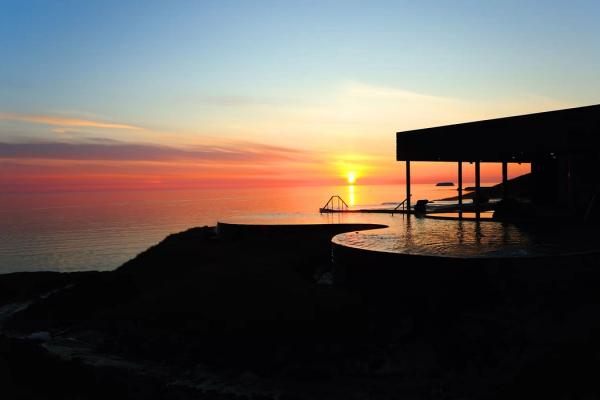
Hike Iconic Trails
With long daylight hours, you can start hikes later in the day and still have plenty of light. You can do long hikes like the Laugavegur Trail or a shorter hike like the leading to the Reykjadalur Thermal River without rushing because it’s getting dark.
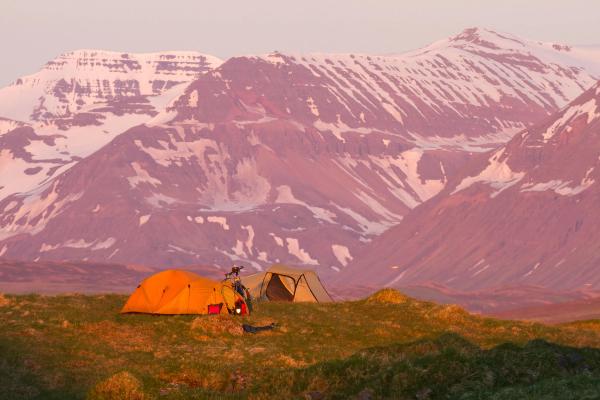
Road Trip the Ring Road
Minimal darkness makes road trips on the Ring Road even better. You’ll have more time to explore hidden spots, take photo breaks, or drive without worrying about running out of daylight.
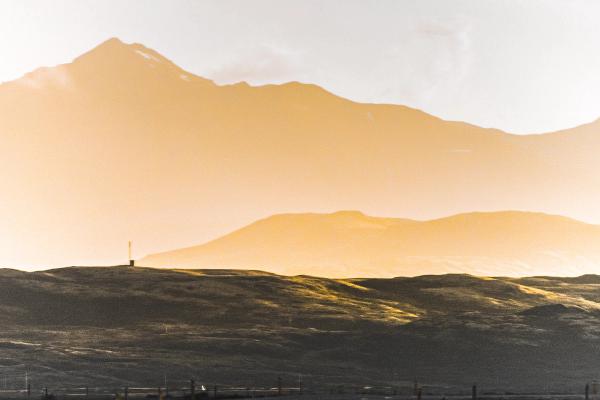
Wildlife Encounters
Puffins, whales, and other animals are often more active during the quieter hours. Places like Vestmannaeyjar (the Westman Islands) or Húsavík are great for spotting puffins or going on a late-night whale-watching tour with the shimmering light on the water.
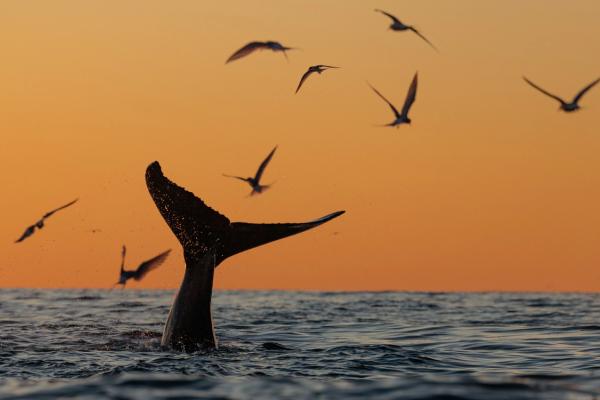
Events
Iceland celebrates the Midnight Sun in many ways:
Summer Solstice Festival in Grímsey
From June 17th to June 20th, this festival on Grímsey Island celebrates the Midnight Sun with live music, guided walks, seafood feasts, and bonfires on the beach. It’s a simple, community-focused event where you can enjoy local traditions and the never-ending daylight in one of Iceland’s most remote and stunning locations.
Suzuki Midnight Sun Run
Around June 23, Reykjavík’s Laugardalur Valley hosts this evening race under the Midnight Sun. You can choose between a half marathon, 10K, or 5K, running through scenic streets and paths. The race ends with a fun pool party, making it a perfect way to celebrate your run in Iceland’s soft evening light.
Arctic Open Golf Tournament
From June 23–25, the Arctic Open at Akureyri Golf Club gives golfers the chance to play 36 holes under the Midnight Sun. Open to everyone, no matter their skill level, it’s a unique way to enjoy golf late into the night while soaking up the amazing views and constant daylight.
Practical Tips for Visitors
Consider these tips to make the most of your trip to Iceland during the Midnight Sun.
Sleep Solutions
Pack an eye mask and take advantage of blackout curtains. Most places have thick curtains, but an eye mask is a good backup if the light bothers you while sleeping.
Flexible Planning
Try visiting busy spots later in the evening and sleeping in during the morning. You’ll avoid crowds and enjoy softer light that’s perfect for photos.
Layer Up
Iceland’s weather can change fast, so bring layers and waterproof gear. If you’re hiking at night, make sure you have sturdy shoes for uneven or wet ground.
Car Rentals & Road Safety
Driving is easier with all the daylight, but don’t forget to take breaks and pace yourself. Summer is a busy season, so book your rental car early.
Capture the Moment
The endless twilight is great for photos. Bring extra batteries and memory cards, and try using longer exposures to capture the colorful evening skies.
Mind Wildlife
When watching birds or whales, keep your distance and follow local guidelines. The long daylight hours mean more chances to see animals, but it’s important to respect their space.
Conclusion
The Midnight Sun isn’t just about extra daylight—it’s a chance to experience Iceland in a completely unique way. Whether you’re hiking at midnight, relaxing in a hot spring with the sky glowing orange, chasing waterfalls in the quiet evening hours, or enjoying local festivals, it all feels more special under the Midnight Sun.
Understanding how it works and planning your adventures around it can make your Iceland trip even more unforgettable. Enjoy the endless light and see why Iceland feels like a whole different world when the sun doesn’t set.

